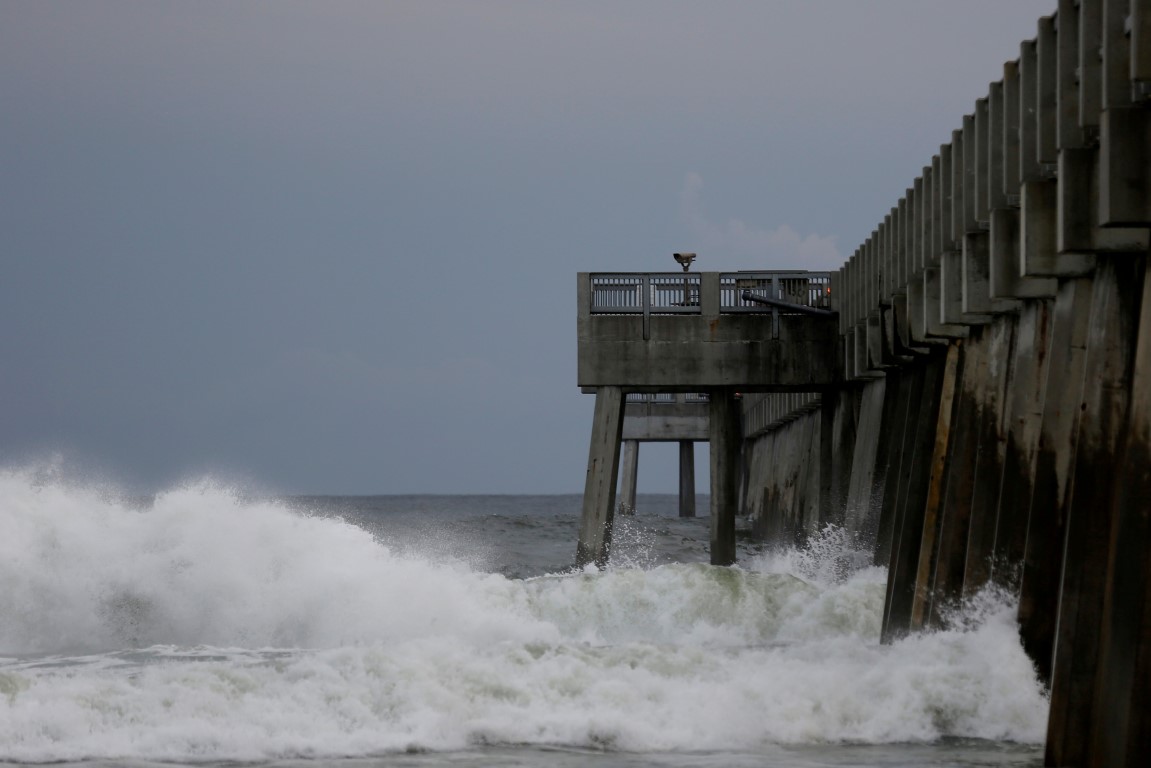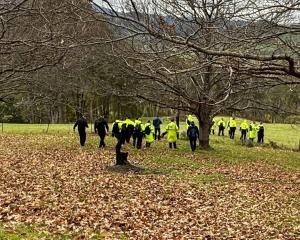
The hurricane was packing winds of up to 210kmh, hours before it was set to make landfall on Florida's Panhandle or Florida's Big Bend where it potentially could unleash devastating waves as high as 4 metres, the National Hurricane Center (NHC) warned.
"THIS IS YOUR LAST CHANCE to evacuate before conditions start deteriorating within the next few hours," Florida Governor Rick Scott tweeted early on Wednesday.
President Donald Trump declared a state of emergency for the entire state of Florida, freeing up federal assistance to supplement state and local disaster responses.
Michael gathered greater strength over warm Gulf of Mexico waters throughout the day on Tuesday as it jumped from a Category 2 to Category 3 on the five-step Saffir-Simpson wind scale.
The last NHC report said the fast-moving storm was about 325km from Panama City, Florida.
Winds as strong as Michael is producing can inflict substantial damage to roofs and walls of even well-constructed homes, according to the National Weather Service.
NHC Director Ken Graham said Michael represented a "textbook case" of a hurricane system growing stronger as it drew near shore, in contrast to Hurricane Florence, which struck North Carolina last month after weakening in a slow, halting approach.
Hurricane-force winds extend about 45 miles from the center, with tropical storm-force winds reaching 175 miles, the NHC said.
"This is a storm that is going to be life-threatening in several ways," said Bo Patterson, the mayor of Port St. Joe, Florida, whose small beachfront town lies directly in the storm's projected path.
The storm is likely to dump prodigious amounts of rain over Florida, Alabama and Georgia, as well as the Carolinas - still reeling from post-Florence flooding - and into Virginia. Up to a foot of rainfall (30 cm) is forecast for some areas.
The region should brace for "major infrastructure damage," specifically to electricity distribution, wastewater treatment systems and transportation networks, Jeff Byard, associate administrator for the Federal Emergency Management Agency (FEMA), told reporters on a conference call.
Byard said an estimated 500,000 people were under evacuation orders and advisories in Florida, where residents and tourists were fleeing low-lying areas in at least 20 counties stretching along 200 miles (322 km) of shore in the Panhandle and adjacent Big Bend region.
Among them was Betty Early, 75, a retiree who joined about 300 fellow evacuees huddled on makeshift bedrolls of blankets and collapsed cardboard boxes at an elementary school converted into an American Red Cross shelter in Panama City, near the storm's expected landfall.
She was unsure how well her old, wood-framed apartment block would hold up. "I'm blessed to have a place to come," she told Reuters. "My greatest concern is not having electricity, and living on a fixed income, losing my food."
'This storm could kill you'
A hurricane warning was posted along more than 300 miles (483 km) of the coast from the Florida-Alabama border south to the Suwannee River.
"If you don't follow warnings from officials this storm could kill you," said Scott, a Republican running for the U.S. Senate in November's congressional elections.
While the swiftly moving storm is not expected to linger over Florida for long, widespread heavy downpours will likely track inland to flood-stricken areas of the Carolinas even as rain-gorged rivers there begin to recede, National Weather Service meteorologist Ken Widelski told the conference call.
Some of the storm's most significant early impact was to offshore energy production. U.S. producers in the Gulf cut oil production by about 40 percent and natural gas output by 28 percent on Tuesday, the Bureau of Safety and Environmental Enforcement said.
Scott declared a state of emergency in 35 Florida counties, mostly encompassing rural areas known for small tourist cities, beaches, wildlife reserves and Tallahassee, the state capital.
Georgia Governor Nathan Deal declared a state of emergency on Tuesday for 92 counties in his state.
About 2,500 National Guard troops were deployed to assist with evacuations and storm preparations, and more than 4,000 others were on standby. Some 17,000 utility restoration workers were also on call.
In Panhandle counties, most state offices, schools and universities were closed for the rest of the week. Lines at gasoline stations grew as people left. Those who stayed emptied grocery store shelves of water and other supplies.
The last major hurricane to hit the Panhandle was Hurricane Dennis in 2005, according to hurricane center data.
Torrential downpours and flash flooding from the storm over the weekend caused 13 deaths in Central America.











